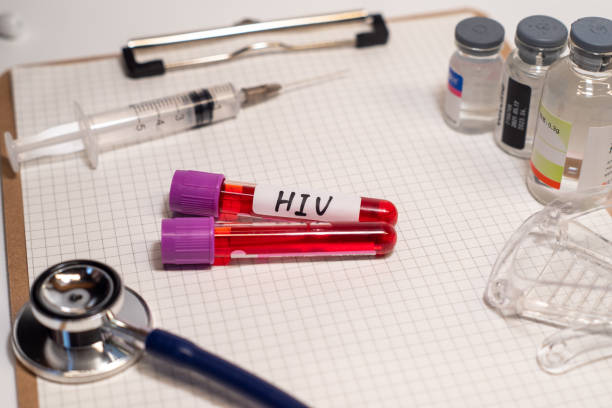HIV Symptoms, Stages, and the Importance of Early Treatment
HIV (Human Immunodeficiency Virus) attacks the body's immune system by targeting CD4 cells, vital to fighting infections. Without treatment, HIV can progress to AIDS (Acquired Immunodeficiency Syndrome), causing severe damage to the immune system. With timely diagnosis and treatment, individuals with HIV can lead long, healthy lives. This article outlines the key symptoms, stages, and treatment strategies for managing HIV.
What Is HIV and How Does It Impact Health?
HIV (Human Immunodeficiency Virus) attacks the body's immune system by targeting CD4 cells, vital to fighting infections. Without treatment, HIV can progress to AIDS (Acquired Immunodeficiency Syndrome), causing severe damage to the immune system. With timely diagnosis and treatment, individuals with HIV can lead long, healthy lives. This article outlines the key symptoms, stages, and treatment strategies for managing HIV.

Signs and Symptoms of HIV Infection
HIV progresses through three distinct stages, with symptoms varying depending on the stage of infection.
Acute HIV Infection Symptoms:
The first stage of HIV infection is known as acute retroviral syndrome (ARS) or primary HIV infection. Symptoms typically emerge 2 to 4 weeks after exposure and may resemble those of the flu. These include:
- Fever
- Fatigue
- Sore throat
- Swollen lymph nodes
- Muscle and joint aches
- Headaches
- Rash
Although these symptoms may subside within a few weeks, the virus continues to multiply in the body.
Clinical Latency Stage (Chronic HIV Infection):
Following the acute phase, HIV enters the clinical latency stage, where the virus continues to replicate but at lower levels. This stage can last for years, with few to no symptoms. If untreated, however, HIV can progress rapidly. Mild symptoms may include:
- Weight loss
- Chronic fatigue
- Diarrhea
- Recurrent infections, such as thrush or other opportunistic infections
During this stage, antiretroviral therapy (ART) can keep the virus under control and delay progression to AIDS.
AIDS (Acquired Immunodeficiency Syndrome):
Without proper treatment, HIV progresses to AIDS, the final and most severe stage. Symptoms of AIDS include:
- Significant weight loss
- Chronic diarrhea
- Persistent night sweats and fevers
- Mouth sores
- Severe fatigue
- Skin rashes
- Pneumonia
- Memory problems or depression
- Swollen lymph nodes
Treatment for HIV
The primary treatment for HIV is antiretroviral therapy (ART), which involves a combination of drugs aimed at suppressing the virus and reducing viral load. ART helps prevent HIV from progressing to AIDS and enables individuals to maintain a strong immune system.
ART consists of different classes of drugs, including:
- NRTIs (Nucleoside Reverse Transcriptase Inhibitors): Block viral replication.
- NNRTIs (Non-nucleoside Reverse Transcriptase Inhibitors): Target reverse transcriptase, an enzyme HIV needs to replicate.
- Protease Inhibitors: Prevent HIV from maturing.
- Integrase Inhibitors: Block the virus from integrating into the host cell’s DNA.
When ART is started early, it can help individuals achieve an undetectable viral load, ensuring that they can live long and healthy lives.
Conclusion
The importance of early diagnosis and treatment cannot be overstated. Starting ART as soon as possible can significantly improve outcomes for people living with HIV. By adhering to treatment and maintaining regular check-ups, individuals can effectively manage the virus and continue to live fulfilling lives.